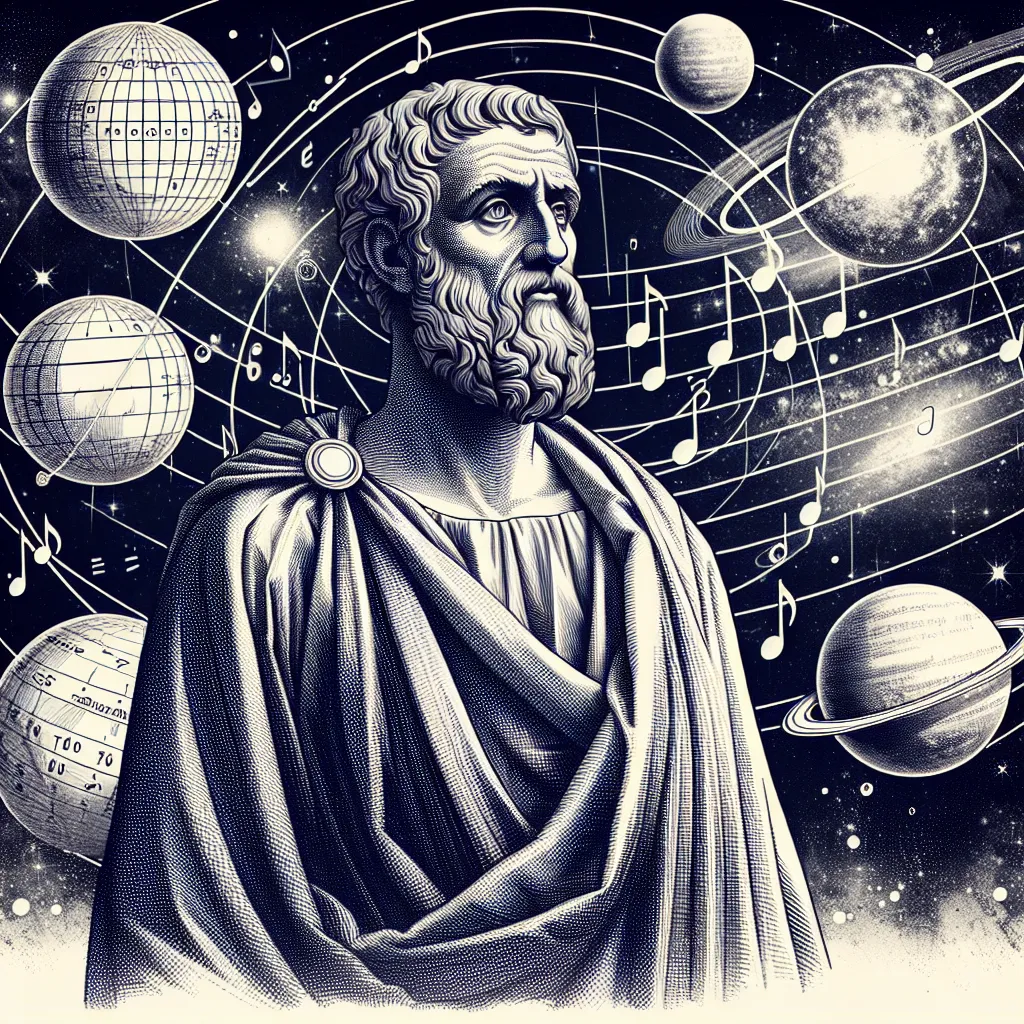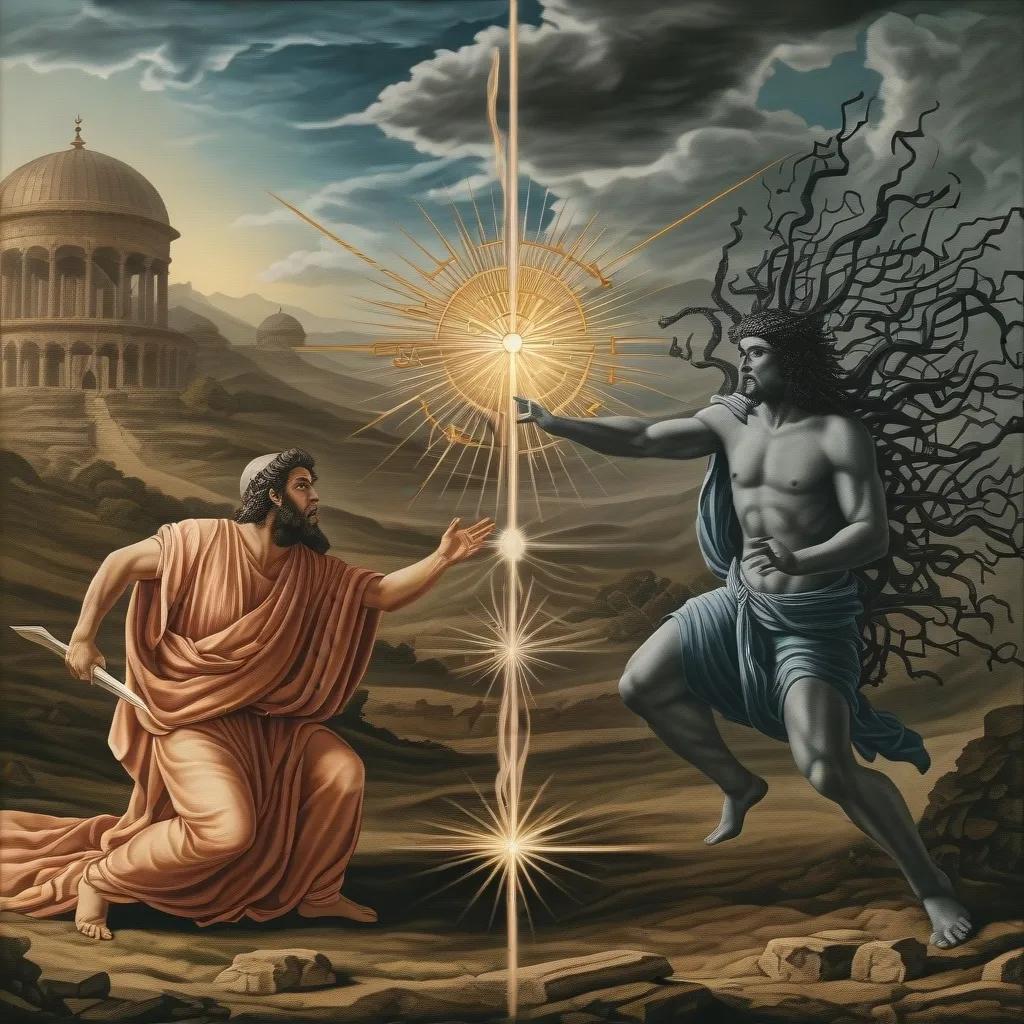Pythagoras stands out as one of the ancient world’s most fascinating figures, shrouded in mystery and legends. The Pythagorean idea of the “Music of the Spheres” is central to their mathematical worldview, impacting cosmology, harmony concepts, and especially music theory. Today, we dive into this philosophical theory, embraced by various thinkers throughout history and still holding relevance.
In Western philosophy, Pythagoras and his followers are key players. Often called the first philosopher—an arguable claim—figures like Plato trace their intellectual lineage back to him. Despite uncertainties about his historical existence, Pythagoras is believed to have led a group of followers in Croton around the 5th Century BC. This group practiced a Pythagorean way of life, emphasizing asceticism, the immortal soul, ritual conduct, and a vegetarian diet.
Over the centuries, Pythagoras became linked with philosophical ideas about numbers and mathematics. He is rumored to have viewed the universe as composed of perfect mathematical relationships. While evidence of Pythagoras teaching these ideas is non-existent, his followers certainly emphasized mathematics. Early Pythagorean thinkers like Philolaus and Archytas highlighted the importance of numerical relationships in understanding the cosmos.
The Pythagorean idea known as the “Music of the Spheres” intertwines mathematics, geometry, astronomy, and music, painting a unified vision of reality. They believed the universe was governed by mathematical patterns and ratios, a notion still upheld today as we find math in everything. The Fibonacci sequence and the golden ratio appear in nature, reflecting these patterns. Pythagoreans asserted the universe was harmonious, much like music, which relies on mathematical harmony.
A famous, albeit probably apocryphal, story has Pythagoras discovering musical intervals by listening to anvils in a marketplace. He supposedly realized that harmonious sounds followed specific mathematical rules, like the octave. This revelation, though not his, is true; musical notes follow patterns of mathematically precise intervals. A note, like an A at 440 Hertz, doubles to 880 Hertz to form a perfect octave. These relationships govern why certain notes sound pleasing together.
Even though modern music theory doesn’t use Pythagorean intervals exactly due to practical limitations, the core idea holds. Musical harmony relies on precise mathematical rules. Our preferences for certain intervals, like the perfect fifth, likely stem from both mathematical structure and cultural conditioning. The Pythagorean vision connected the universe’s harmony with musical harmony, seeing all of reality as a musical composition.
The “Music of the Spheres” extended this concept to the cosmos. Ancient beliefs posited that planets moved in concentric spheres around the Earth, their movements creating inaudible but profound music. This idea influenced thinkers like Plato, who described the universe’s creation through mathematical and musical harmony in his dialogue, “Timaeus.” He envisioned the cosmos as a grand composition, with human life ideally harmonizing with this universal music.
This Pythagorean influence persisted into the Middle Ages. In the 6th century, philosopher Boethius classified music into three categories: music of the spheres (musica mundana), human harmony (musica humana), and instrumental music (musica instrumentalis). These forms demonstrated different manifestations of the universe’s fundamental harmonious nature.
Even in the 17th century, astronomer Johannes Kepler carried the Pythagorean torch. His work described the cosmos in musical terms, with planets moving in elliptical orbits and forming a cosmic choir. Kepler’s harmonica mundi integrated both new astronomical understanding and musical theory, blending ancient and contemporary ideas.
While many ancient cosmological ideas have been displaced, the Pythagorean notion of a musically harmonious universe persists. Modern physics, including string theory, often uses musical language to explain fundamental aspects of reality. Although Pythagoras’s specific theories have been refined or disproven, the basic connection between music and mathematics remains true. The mathematical patterns governing musical harmony are ubiquitous, shaping everything from Bach to birdsong.
Our universe, though perhaps not perfectly harmonious at all times, is filled with patterns and rhythms reminiscent of a grand symphony. Music and mathematics are intertwined in the fabric of reality, reminding us of the profound harmony underlying our existence. We all contribute to this universal melody, each note a testament to the beauty and symmetry of our world.






